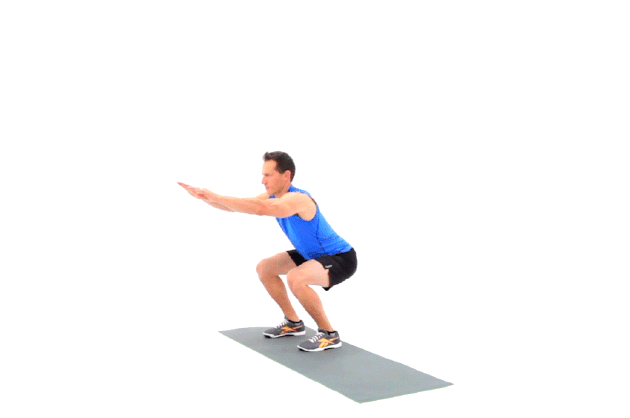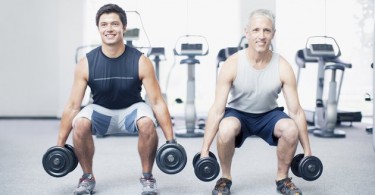The jump squat is a full-body exercise that requires no equipment and primarily works the legs and midsection -- specifically, the gluteus maximus, hamstrings, abdominals, quadriceps and calves -- by alternately stretching and contracting the muscles, Correct performance can help athletes in numerous sports. For example, it can improve the vertical jump in basketball and explosiveness in football.

Advertisements
How to Prepare
Work out on grass or turf to lessen stress on the knee joints. Concrete or wood floors are too hard and should be used only with padding such as a rubber mat. As with other plyometric exercises, jump squats should be done at the beginning of an exercise program after the central nervous system is warmed up and ready to perform complex exercises. Jog or jump rope for three to five minutes to increase blood flow through the body and help the elasticity in your muscles. Then perform movements that mimic this complex exercise, such as the body-weight squat.
Advertisements
How to Move
Start with your feet a bit wider than shoulder-width apart. Put your hands behind your head with your fingers interlocked. The direction of your jump will be vertical. Start by standing tall, then coming down into a squatting position with your thighs slightly higher than your knees. Quickly explode into the air for maximum height. In mid-air, your body should be as straight as a stick. Land in the squat position and pause for a moment.
Progression
Beginners should practice stationary squats before attempting to jump. Once you’ve mastered the hip-hinge mechanism, start with small jumps and focus on your landing mechanics. As you progress in your training, start jumping onto elevated platforms such as a box. Start by facing a box that is 6 inches high and land on the box in a squatting position. Pause, stand straight up, take a backward step down and repeat.
Things to Remember
Some circuit workouts call for jump squats in the middle or at the end of the program. There is more chance that you will injure yourself,because you’ll be tired from previous complex exercises. Also, if you do the squat jumps too many times in a short duration, you may put too much stress on the joints in the knees. And when you finish your workout, cool down with stretches that target the muscles that you focused on during the plyometric exercise: namely the hamstrings, glutes and quadriceps.
REFERENCES & RESOURCES Essentials of Strength Training and Conditioning; Thomas R. Baechle, Roger W. Earle ACE Fitness Exercise Library: Squat Jump ExRx.net: Squat



Comments